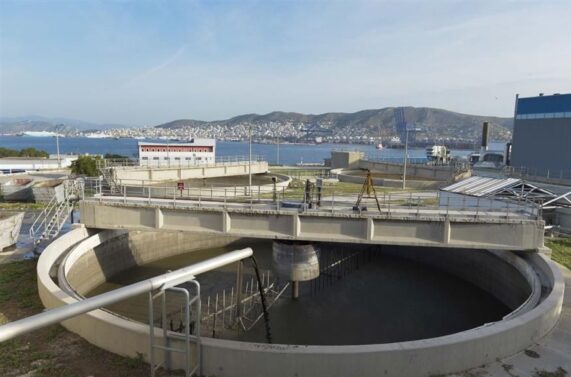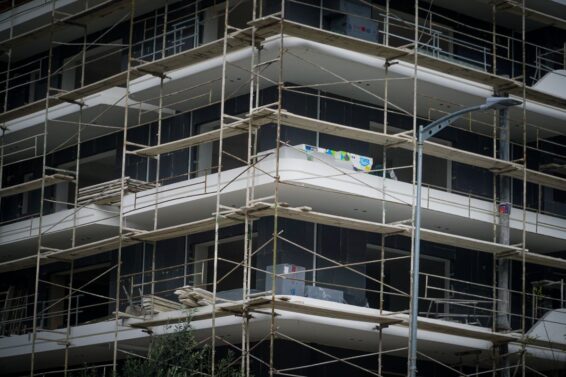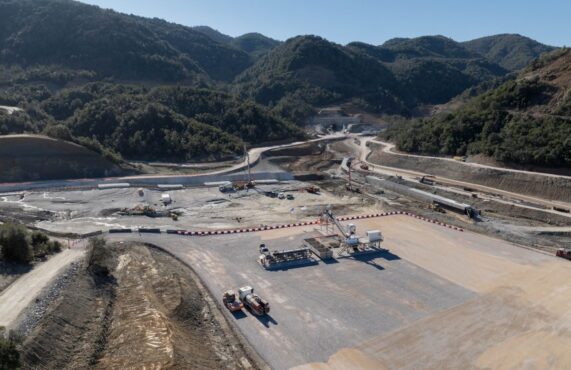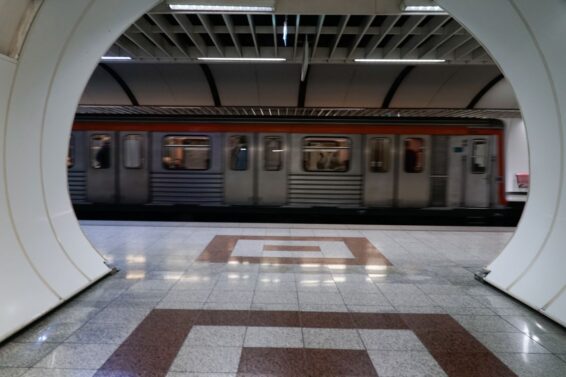“By exploring the rooftop environments and enabling the city to grow vertically we can use a lot of existing city space, changing the city’s perspectives,” says Henriette Johansson, regional manager of AMF Fastigheter, one of Sweden’s largest property companies.
Stockholm is the fastest-growing city in Europe, adding two buses of people to its population each day. And the need for change and new development is growing with it.
“Stockholm’s urban planning is rapidly changing with the flow of people, and evolving together with businesses,” adds Henriette.
‘Vibrant city space’
Johansson is regional manager of Urban Escape, one of several new projects giving the Stockholm skyline a facelift over the next few years.
“Urban Escape is a new, vibrant city space in the centre of Stockholm, consisting of five buildings, four streets, two squares, and a mall located right in the heart of the city,” Johansson says. “It will become a community where business leaders, entrepreneurs, and all people working and visiting the city want to collaborate and socialize.”
One of Stockholm’s most central malls, Gallerian, has been renovated over the past year making previously dormant space behind it – Brunkebergstorg – into an extension of the city hub. Two new hip hotels, Hobo and At Six will open in the area on March 23rd.
“At Six offers luxury and elegance with a twist,” Johansson says.
“It breathes quality art and is tailor-made by various designers. In contrast, creative functionalism is key for Hobo, designed by internationally acclaimed Werner Aisslinger. Hobo is also part of the larger rejuvenation scheme, bringing the once-vibrant Brunkebergstorg back into fashion.”
The two new hotels are the largest hotel investment in the history of Stockholm, and while the two are very different in character, both complement the vision of Urban Escape.
“For us, Urban Escape is the mixture of urbanism with vibrant, pulsating modern city life as well as tranquility and recuperation right in the middle of it,” Johansson says.
The renovated square will be dotted with fountains and sakura trees – but the most exciting part of Urban Escape isn’t what’s on street level. It’s on the roof.
The new city block will feature a lush rooftop gardens with 360 degree views of central Stockholm. Cafes, restaurants, bars, and even a gym are in the works.
“On one rooftop you will find TAK, Stockholm’s new fine-dining restaurant overlooking the city,” Johansson says. “The two-story restaurant will open in March and feature food inspired by Japanese flavours. The other outdoor terrace is being designed as we speak and will open as soon as the weather allows.”
A golden window of opportunity
And there’s more going on downtown as well. The heart of the Stockholm’s city centre, Sergels Torg, is also getting revamped.
“The main goal is to create a safer and more vibrant part of the city,” says Anna Nyberg, director of Stockholm property development at Vasakronan, Sweden’s largest property company.
“We have a window of opportunity now, as the big bank SEB is leaving the city and freeing up a lot of space,” she explains. “And that is why we grabbed this opportunity to create more lively area downtown.”
Vasakronan is the brains behind the popular Hötorgsterrasen, a newly reopened terrace and food-truck court downtown, which has had test-runs the past two summers. But that’s just the beginning.
Over the next few years much of the area around Sergels Torg will be rebuilt, with new office buildings, connections to the upper level of Malmskillnadsgatan, new hotels and restaurants, and a public pavilion featuring events and art.
“Around Malmskillnadsgatan, the streets are long and narrow, and it’s just huge old offices,” Nyberg explains.
But that’s all about to change.
The 650 metre-long street that starts at Brunkebergstorg and runs adjacent to Sergels Torg will be split into three parts: a hotel, apartments, and offices.
The hotel – also with a rooftop terrace – will be built in light, reflective materials to help brighten the area, and new shops and balconies overlooking the streets will make the street a lively and safe place to be at all hours. A wide staircase, Soltrappan, will connect the street to Sergels Torg below and offer visitors a place to sit and socialize or eat lunch.
“Our vision is to create an area where people are active 24/7,” Nyberg says. “We have to look at the big picture and combine residences, offices, shops, and culture.”
Integrating old and new
But while Vasakronan will certainly breathe new life into the city centre, the company is also working hard to maintain the city’s unique character.
“For the new terraces and Sergelgatan area, we are not tearing anything down,” Nyberg explains. “Our inspiration is how the area looked once upon a time, and what the original architects actually intended.”
She notes that Stockholm is one of the most beautiful cities in the world – largely due to the seamless integration of old and new.
“I think the combination of the old buildings, the new buildings, and the water are the main reason we like Stockholm so much,” she remarks. “So it’s important in these developments to not look at just one project, but the whole picture.”
And in the big picture, there’s a lot going on in Stockholm.
The city’s own meat-packing district, Slakthusområdet – an old industrial area near Globen, will be transformed into a new residential area brimming with culture, shops, restaurants, a brewery, a new subway station, and a school.
And north of the city, near Solna, there’s the Hagastaden development, offering new apartments and offices focused on the life science sector. In Vasastaden, closer to the city centre, the impressive Norra Tornen will tower above the city, boasting a modern facade, top-notch apartments, a cinema, gym and movie theatre for residents, as well as mingle areas for the general public.
Southwest of the city, on the “red line” of the subway, property company SSM is building another set of towers. The Tellus Towers at Telefonplan will be 78 stories high – making them northern Europe’s tallest residential buildings – and feature a rooftop pool.
And while these new outliers will definitely expand Stockholm’s traditional skyline, Henriette Johansson of Urban Escape believes it’s the big picture that’s important.
“We take every square metre into account. We always look at how we can use the full potential of each building, from the street level to the rooftops. Other projects with an all-inclusive approach are in the pipeline,” she says.
“If we can inspire others to develop similar spaces it’s a gain for the entire society, creating more sustainable cities and companies.”
So next time you’re in central Stockholm, be sure to look up and relish the rooftops – if you’re lucky, you’ll be able to witness their evolution in real time.
ΜΗΝ ΞΕΧΑΣΕΤΕ
- Ακολουθήστε το ypodomes.com στο Google News και μάθετε πρώτοι όλες τις ειδήσεις για τις υποδομές στην Ελλάδα
- Αν είστε επαγγελματίας του κλάδου, ακολουθήστε μας στο LinkedIn
- Εγγραφείτε στο Ypodomes Web TV

















